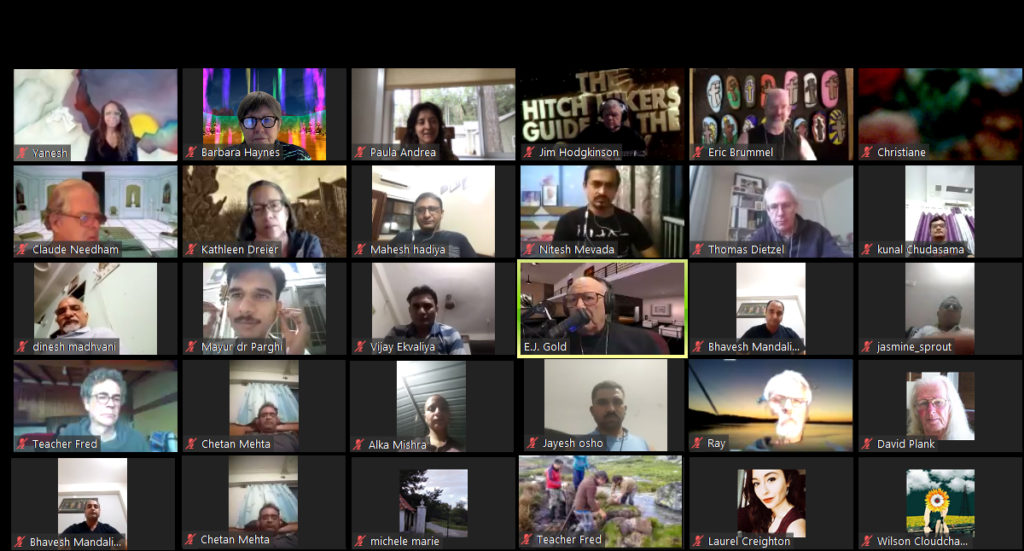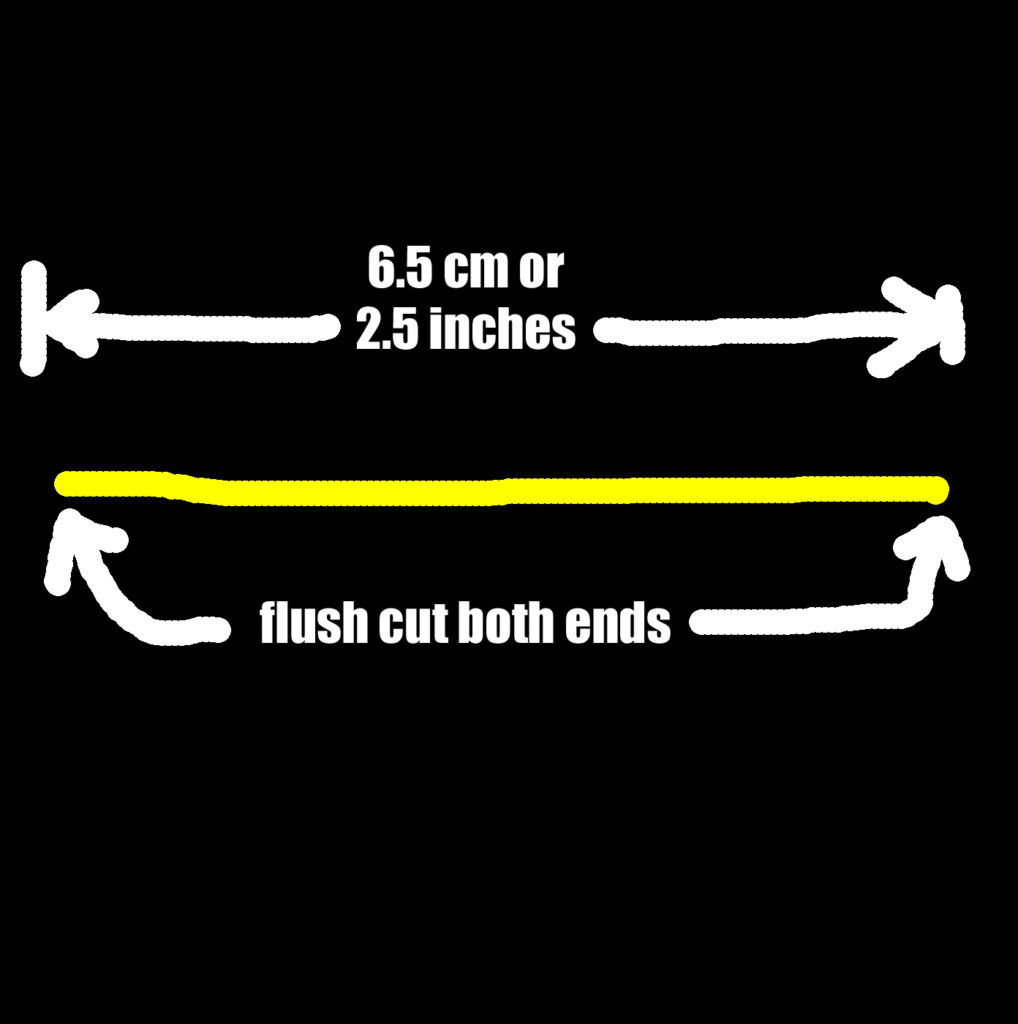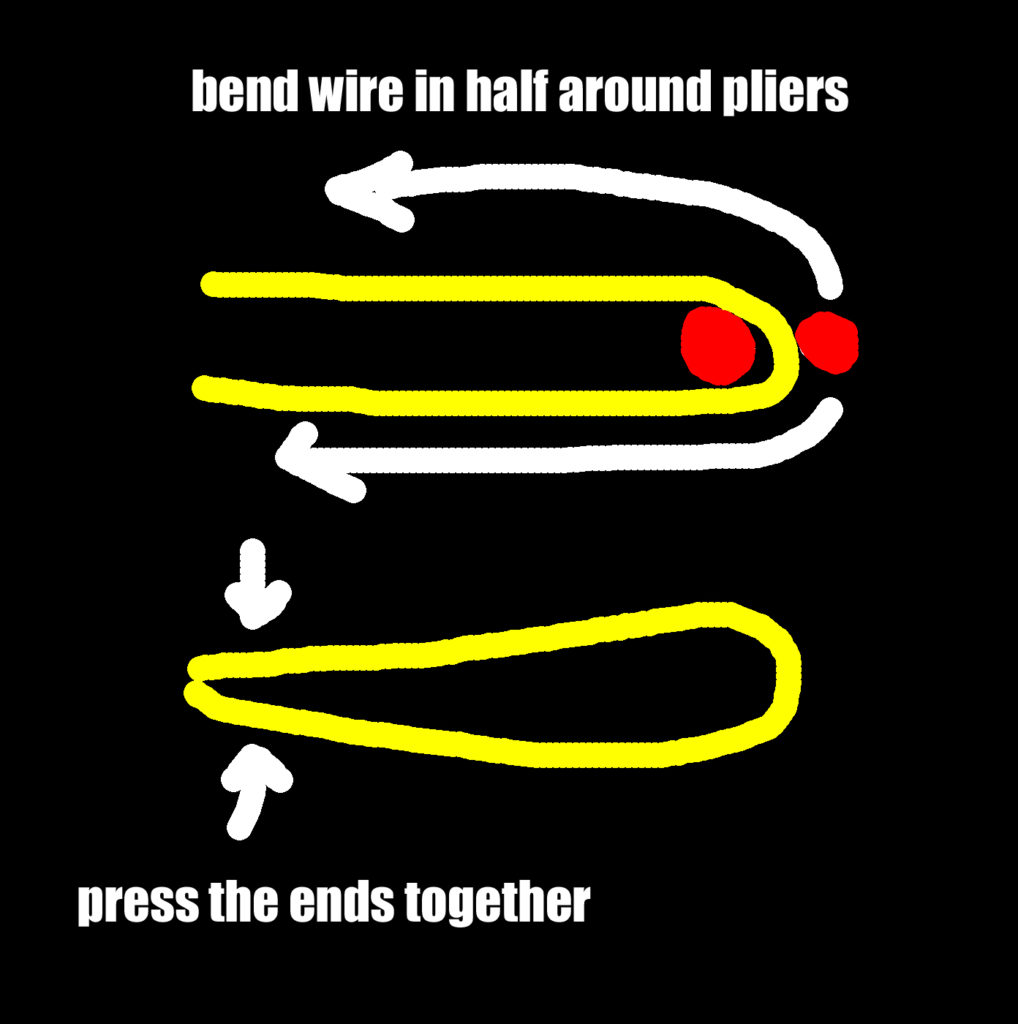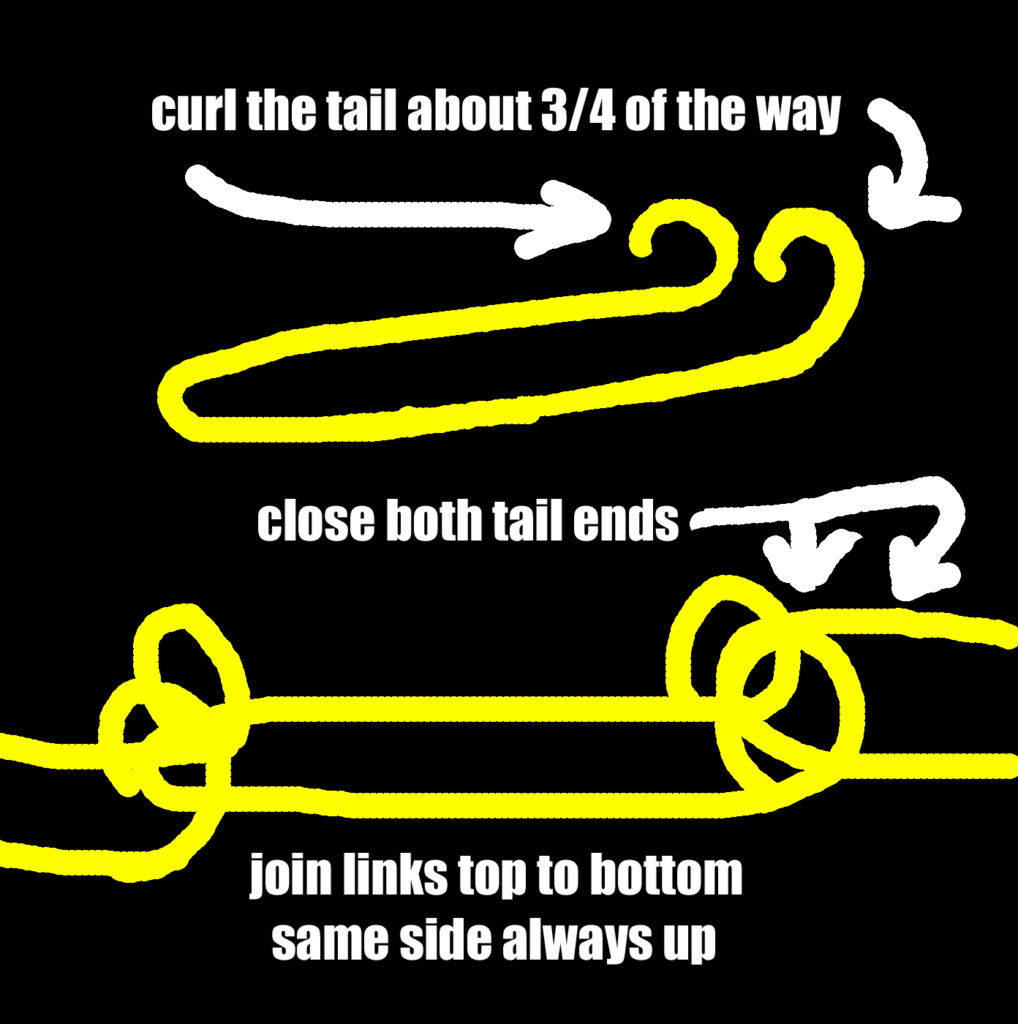It is time for me to finally at long, long last, reveal my ancient secret of making solderless wire link chains.
First of all, these are the same chains we made 7,000 years ago in the Tigris-Euphrates river junctions, but with modern copper instead of other stuff we found in the ground.
Bronze was common, pure copper was not. There was a stone age, then a bronze age and then after a while, an iron age, when you didn’t have to hunt up strange meteorites to bang into really sharp and unbreakable blades.
So chain links have been around a long, long time. I have some very rusted excavated chains from a Roman lady who remained where she was. The chain is exactly the link I’m offering here today, free of charge and welcome to all.
If I charged for it, it’d be worth more than you’d be willing to pay, simply because you have no way at present of knowing how valuable this formerly secret knowledge really is, but you’ll find out soon enough.
So as to the final product, you’ll have to trust me on this one. I have no photos at present of the Chain Gang’s recent production, but it doesn’t really matter — the process is the same, whether it’s pure solid copper wire, solid sterling silver round dead soft, or solid 18k gold.
They all are made the same way.
Copper is very easy to bend — malleable — and silver is slightly easier in the dead soft, but 18k gold is going to be a challenge.
Be a smarty — wait until you get really good at the copper before you move on to silver, and then wait until you are a Master before working with 18k or 22k gold, okay?
Like you’re going to run out there and buy some 18k gold wire right away. Of course you’re not, but some folks have, in the past, run amuk and bought beyond their skills, and so I mention it here, no extra charge.
Okay, let’s look at what we have here. We’ll need the following things:
- ROUND NEEDLENOSE PLIERS — I like Lindstrom, but hey, it’s your choice.
- FLUSH-CUTTER — Again, Lindstrom makes some great flush-cutters.
- VELVET PAD — You can use a standard 17″ jeweler’s pad for this.
- ONE ROLL .16 GAUGE COPPER WIRE — At your local hardware store.
That’s it. That’s the whole shebang. Never mind the thousands of dollars you’d have invested in opening a jewelry store or starting up a manufacturing plant.
Those are your tools and your supplies, at least for the moment. We’ll improve upon them as we go.
One powerful painfully earned piece of advice: Don’t be cheap with the tools. Save on bread or don’t go on that long highway drive today. Don’t be cheap with the tools.
At some point, if you haven’t already independently arrived there, you’ll see the wisdom in not being cheap with the tools.
Place your velvet pad on the desk or tabletop before you, and put your pliers and cutter on the side somewhere.
DON’T OPEN THE WIRE.
There’s a little tab of wire sticking out somewhere. Pull on that just a little. If the wire doesn’t come out easily, pull harder and unsnarl as necessary.
It shouldn’t ever be necessary. If you’re having trouble getting the wire out of the box by pulling it out, you’re doing it wrong.
I don’t know how to help you there. Do what you can to get the wire out of the box, about three feet of it, but don’t crimp it up.
Pick up the flush-cutters and always hold them the same way, flush side to the left, sharp side to the right.
Starting with the right end of the wire — that’s the end you happen to be holding — cut the wire into 2 1/2″ lengths.
Pile them up to your left. All the ends on the RIGHT should be flush.
Flip the pile over, left for right. Now all the ends on the right will be SHARP. Flush-cut those. Now you’re ready to start making links.
Pick up your pliers and place one of the wire lengths into the jaw of the pliers, about half-way up.
Gently bend the wire across the pliers. Never grab the wire with the pliers, nor should you ever squeeze the metal. Just use the pliers to guide the metal and let them melt into place.
Yes, melt. At first, you’re going to grunt — that’s what a grunt does. At some point, you’ll actually be in touch with the metal, and it will cooperate with you like it doesn’t do now.
In short, mastery comes, eventually, if you stick at it long enough. Hey, that’s true of guitar practice, too. And comedy. And magic. And cross-word puzzles.
Okay, so here’s an illustration of what we’ve done so far:
You should end up with a more or less pear-shaped or drop-shaped copper loopy-doodle with the flush-cut ends more or less together.
Work to get them to be exact. This will take time and patience, and you won’t do it right until you’ve paid the price of NOT doing it right.
If you believe me just on trust, you’ll save yourself a lot of needless struggle against the flow. If not, you’ll have to grind it out for yourself.
Okay, now we have the trickiest part of the whole thing — bending the tail end into a connecting loop.
Like I said, it’s tricky, but you CAN do it, with effort and slowly-developing skills. You bring the loops to a close, then EASE THEM OFF to allow the wire of the connecting link to penetrate.
Then close the tail loop — sometimes you’ll get both at once to close, but more often than not, you’ll have to work on one more than the other — there are two wires on the tail end, right?
Well, they don’t often close at the same time in exactly the same way — they don’t match each other exactly, so you’ll have to make some micro-adjustments, is all.
Not to worry, it’ll be obvious when you’re doing it. Of course, if your entire adventure consists in reading about it, you’ve already had your adventure, and it won’t be obvious at any point in the near or distant future.
You have to be there to appreciate it.
“Watch out for that truck!!!” is a useless piece of advice if you’re nowhere near a truck. Like I said, you gotta be there to get it.
Okay, so now you link up all your links and form a chain that can go around the head. If you want to put a pendant on the chain, do it before you close the chain up.
When you’re ready to learn clasps, let me know. We have several dozen varieties of clasps, each from a different ancient culture, and all of them are easily made from simple hardware store copper wire, so dig right in, it’s cheap and easy and time-consuming and fun, and great for developing skills like attention and single-pointed consciousness, not to mention memory and hand-eye coordination.
Actually, I did mention them. It would have been awkward to say, “not to mention … “, but I guess that would be more linquisticly and grammatically correct, no?
Okay, so get going! Make some links! Links um die Ecke!
If you have any trouble at all, I wouldn’t be surprised. You can book attendance at any of my chain workshops, all of which are upcoming over the next few months, so get on board for adventure!
See You At The Top!!!
gorby





